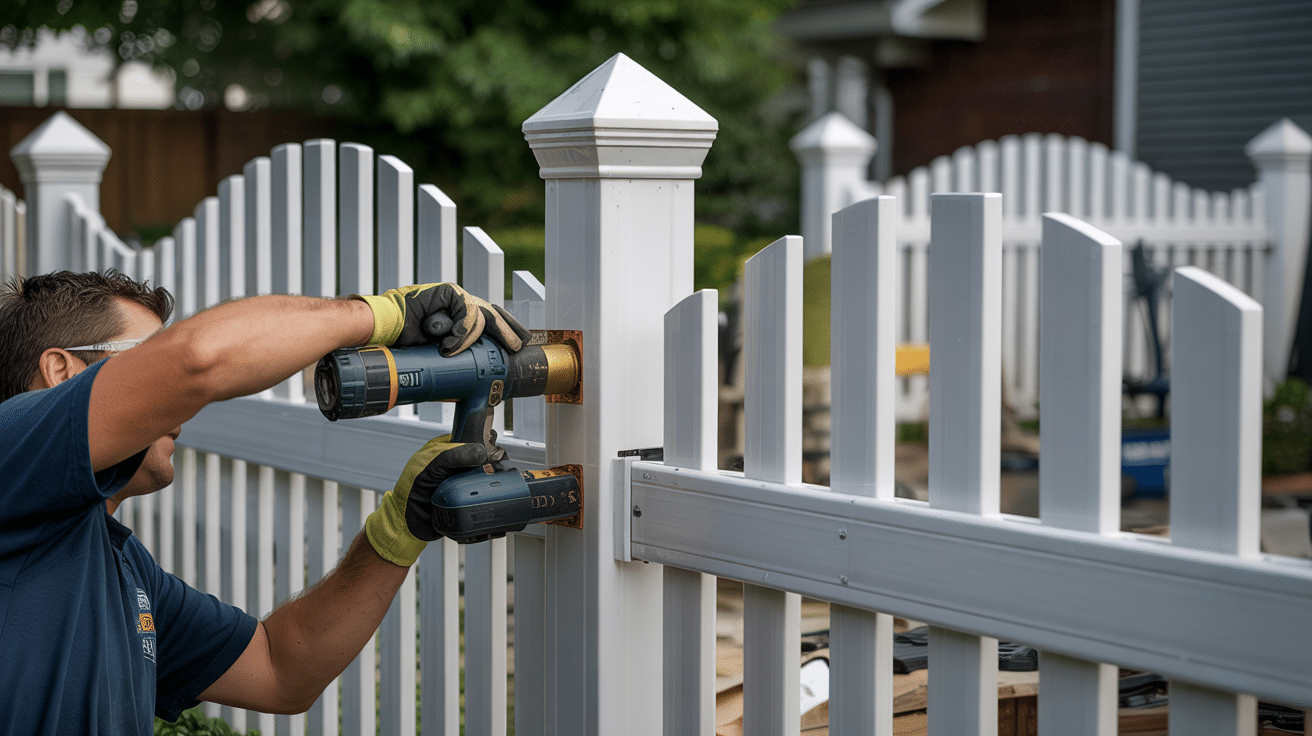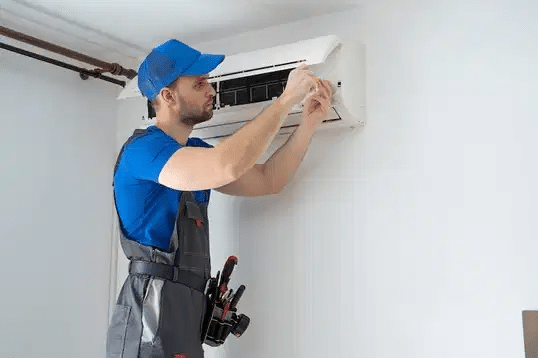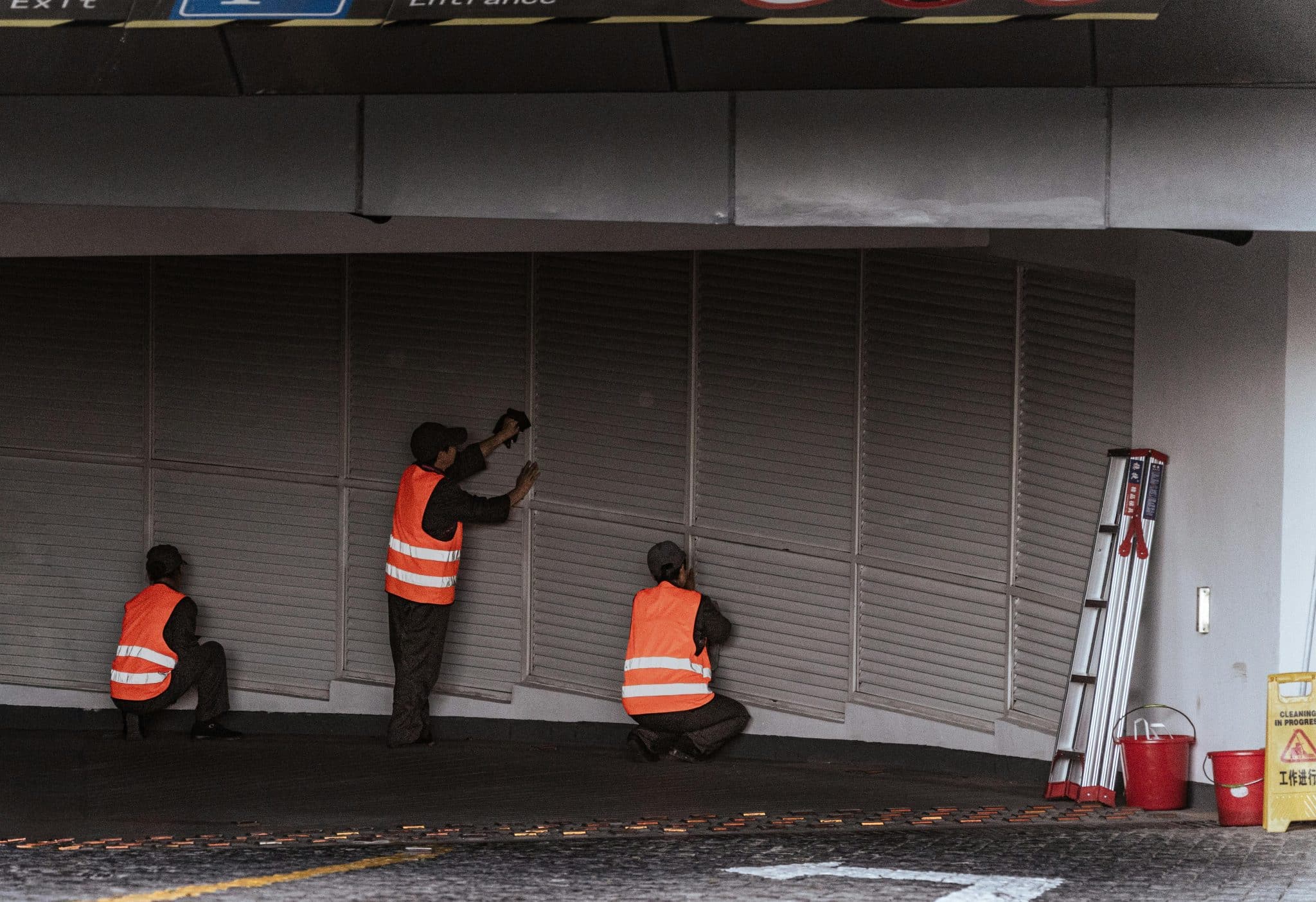Do you cringe when you see fence price tags? You’re not alone. Many homeowners feel the same way about vinyl fence installation costs.
Vinyl fences offer a clean look with minimal upkeep compared to wood or metal options. They don’t rot, rust, or need frequent painting, making them a top pick for many property owners.
So, what will a vinyl fence cost you? Most homeowners pay between $20 to $40 per linear foot for vinyl fence installation. A complete project typically runs from $2,000 to $5,000 for an average yard.
Why such a range in prices? Several factors affect your final bill – from fence height to style choices to who does the work.
Stick around to learn what drives these costs and how to get the best value for your money.
How Much Does Vinyl Fence Installation Cost?
The cost of vinyl fence installation is, on average, $20 to $40 per linear foot. For a standard home with 150 to 200 linear feet of fencing, you can expect to pay between $3,000 and $8,000 total.
This price varies based on several key factors:
- Quality of materials: Basic vinyl costs less than premium grades
- Height of fence: Taller fences need more material and labor
- Style and design: Simple panels cost less than fancy patterns
- Property layout: Uneven ground needs extra work
- Gate additions: Each gate adds $200-$400 to the total cost
Most vinyl fence projects include both materials and professional labor. The materials alone often account for 60% of your total cost, while labor makes up the remaining 40%.
When getting quotes, ask what’s included. Some companies charge extra for things like removing old fencing, dealing with tough soil, or adding decorative post caps.
Remember that while vinyl costs more upfront than wood, it often saves money over time with less maintenance.
What Affects Vinyl Fence Installation Costs?
Several factors influence how much you’ll pay for your vinyl fence. Let’s break down what impacts your final bill:
1. Material quality: Not all vinyl is equal. Basic vinyl panels might cost $15-25 per linear foot, while premium, thicker vinyl with UV protection could run $30-45 per linear foot. Better quality vinyl resists fading and cracking over time.
2. Fence style and design: Simple styles cost less than fancy ones. Privacy fences (solid panels) use more material than picket styles, so they cost more. Lattice tops and decorative elements add to the price tag.
3. Size matters: Both length and height affect cost. Due to material quantity, a 4-foot fence costs less than a 6-foot fence. A longer fence line means more posts, panels, and labor time.
4. Terrain challenges: Flat, soft ground is easier to work with than rocky or sloped areas. Contractors may charge extra for:
- Clearing brush
- Working around trees
- Leveling sloped yards
- Breaking through rocky soil
5. Labor and contractor fees: Professional installation typically costs $7-15 per linear foot. Specialized contractors might charge more but often provide better results. Where you live matters too – urban areas generally have higher labor rates than rural locations.
Understanding these factors helps you plan your budget and make smart choices about your fence project.
Vinyl Fence vs. Other Types of Fences: Cost Comparison
Cost is often a key factor when choosing a fence. Let’s compare vinyl to other popular fencing options.
Before investing in any fence, it helps to understand what you’re getting for your money. Each fencing material offers different benefits at various price points.
| Fence Type | Initial Cost (per linear ft) | Lifespan | Annual Maintenance Cost | Privacy Level |
|---|---|---|---|---|
| Vinyl | $20-40 | 20-30 years | $0-50 | High |
| Wood | $15-30 | 10-15 years | $100-300 | High |
| Chain-Link | $10-20 | 20+ years | $50-100 | Low |
| Aluminum | $24-32 | 20+ years | $50-100 | Medium |
| Steel | $30-55 | 15-20 years | $100-200 | Medium |
Looking at the table, you can see the trade-offs. Wood costs less upfront but needs regular staining and sealing. Chain-link is the budget option but offers less privacy. Metal fences are strong but can dent and may need occasional painting.
Most homeowners choose vinyl when they want a good balance of looks, privacy, and low maintenance. While you pay more at the start, many find that vinyl pays for itself over time by avoiding the yearly maintenance costs that wood requires.
The right choice depends on your specific needs, budget, and the length of time you plan to stay in your home.
The Pros and Cons of Vinyl Fencing: Is It Right for You?
Before you commit to a vinyl fence, weigh the pros and cons. This honest assessment will help you decide if vinyl is the right choice for your home.
Pros
Stands the test of time: Vinyl fences can last 20-30 years with minimal care. They don’t rot, warp, or get eaten by bugs like wood fences do, so there are fewer worries about replacing sections over time.
Almost zero upkeep: Once installed, vinyl fences need very little attention. No painting, staining, or sealing is required—just an occasional wash with soap and water keeps them looking fresh. This saves both time and money year after year.
Looks good for years: Vinyl comes in many colors and styles to match your home. The color goes all the way through the material, so scratches don’t show easily. Many people like the clean, uniform look that stays fresh-looking longer than other materials.
Cons
Costs more at the start: The initial price tag is higher than wood or chain-link options. While you save on maintenance costs later, you need a bigger budget upfront.
Can crack when very cold: In areas with extreme temperature swings, vinyl may become brittle and crack during very cold weather. Some cheaper vinyl products can also sag or warp in intense heat.
Fewer custom options: While vinyl comes in many styles, you can’t easily change its look later. Wood can be cut to custom patterns or repainted, but vinyl comes in pre-made designs that can’t be modified much after installation.
When deciding if vinyl is right for you, think about your local climate, how long you’ll stay in your home, and whether the low maintenance is worth the higher initial investment.
Cost Breakdown by Fence Size and Type
Understanding costs based on fence size helps you plan your budget better. Let’s look at what you might pay for different fence sizes.
1. Small Fence (up to 100 feet)
A small fence project, like enclosing a front yard or a small backyard, typically costs between $2,000 and $4,000 total. This assumes standard 6-foot privacy vinyl fencing at an average cost of $30 per linear foot.
For a small 80-foot fence perimeter:
- Basic vinyl: $1,600 – $2,400
- Mid-grade vinyl: $2,400 – $3,200
- Premium vinyl: $3,200 – $4,000
Small projects sometimes have higher per-foot costs because setup and equipment costs are spread across fewer feet of fencing.
2. Medium Fence (100 to 300 feet)
Medium-sized projects typically enclose standard suburban backyards. Expect to pay between $4,000 and $9,000 total.
For a medium 200-foot fence perimeter:
- Basic vinyl: $4,000 – $6,000
- Mid-grade vinyl: $6,000 – $8,000
- Premium vinyl: $8,000 – $12,000
Medium projects often hit the sweet spot for cost efficiency—they are large enough to spread out fixed costs but not so large that they require extra crew or special equipment.
3. Large Fence (300+ feet)
Large projects for big properties or full perimeter fencing can run $9,000 to $20,000 or more.
For a large 400-foot fence perimeter:
- Basic vinyl: $8,000 – $12,000
- Mid-grade vinyl: $12,000 – $16,000
- Premium vinyl: $16,000 – $24,000
Large projects might qualify for bulk discounts on materials but often require more posts, gates, and labor hours. Some contractors offer slight discounts on the per-foot rate for very large jobs.
Remember that these estimates assume fairly flat, accessible terrain. Hills, rocks, or difficult access points can add to these base costs.
How to Save on Vinyl Fence Installation Costs
Installing a vinyl fence doesn’t have to break the bank. Here are some smart ways to trim your costs while still getting a quality fence.
1. DIY Installation
Putting up the fence yourself can save 30-50% on labor costs. You’ll need basic tools and a weekend or two of work. Most vinyl fence kits come with instructions. Bring a friend—this job is easier with help. If you’re not handy, professional installation might be worth the extra cost.
2. Getting Multiple Quotes
Get at least three written estimates from contractors. Ask what’s included in their price and check for hidden fees. Read reviews and ask for references. Many homeowners find price differences of 10-20% between contractors for the same job.
3. Choosing the Right Fence Height and Design
Shorter fences use less material and cost less. Plain panels are cheaper than decorative ones. Standard colors may cost less than custom shades. Fewer gates mean lower costs. Think about what you really need for your property.
4. Timing the Installation
Fall and winter are often slower for fence companies. Many contractors offer off-season discounts of 10-15%. Booking in advance may get you better rates. Consider joining with neighbors for possible group discounts.
By using these strategies, you can save hundreds or even thousands on your vinyl fence project.
Conclusion
Is a vinyl fence worth the money? For most homeowners, yes. While you’ll pay more upfront than wood or chain-link, the math works in your favor over time.
Think about it: there is no painting, staining, or replacing rotted boards. A quick spray with a hose keeps it looking fresh for years. This low-maintenance feature saves both time and money.
A vinyl fence can last 20-30 years with minimal care. Compare that to wood’s 10-15 years with regular upkeep, and the value becomes clear.
Your decision depends on three factors: your budget today, how long you’ll stay in your home, and how much work you want to put into your fence each year.












